It doesn’t matter if you live in Beijing, Shanghai or down in Guangzhou or Shenzhen, all of China’s major eastern metropolises are well-linked to the outside world. We’re particularly well connected with the Asia Pacific region, which is home to some of the hottest tourist destinations in the world – from the beaches of Bali, Fiji and South Thailand to the temples of Cambodia, Myanmar and India.
Now that school is out and summer is here, it seems like the perfect chance to take a deep dive into the swoon-worthy destinations located in our geographic backyard. Because, frankly, there has never been a better time to embark on a vacation or adventure than right now!
Below, we’ve rounded up the hottest travel spots for history buffs, cultural cosmonauts, foodies and beach bums. While we do like to consider ourselves experienced travelers slash adventurers, to assemble this dream destination guide we enlisted the help of a panel of travel industry experts: travel agents, marketing firms and writers.
We hope you find their selections both inspiring and enticing. Bon voyage!
For the Beach Bums
1. Tahiti & Bora Bora, French Polynesia
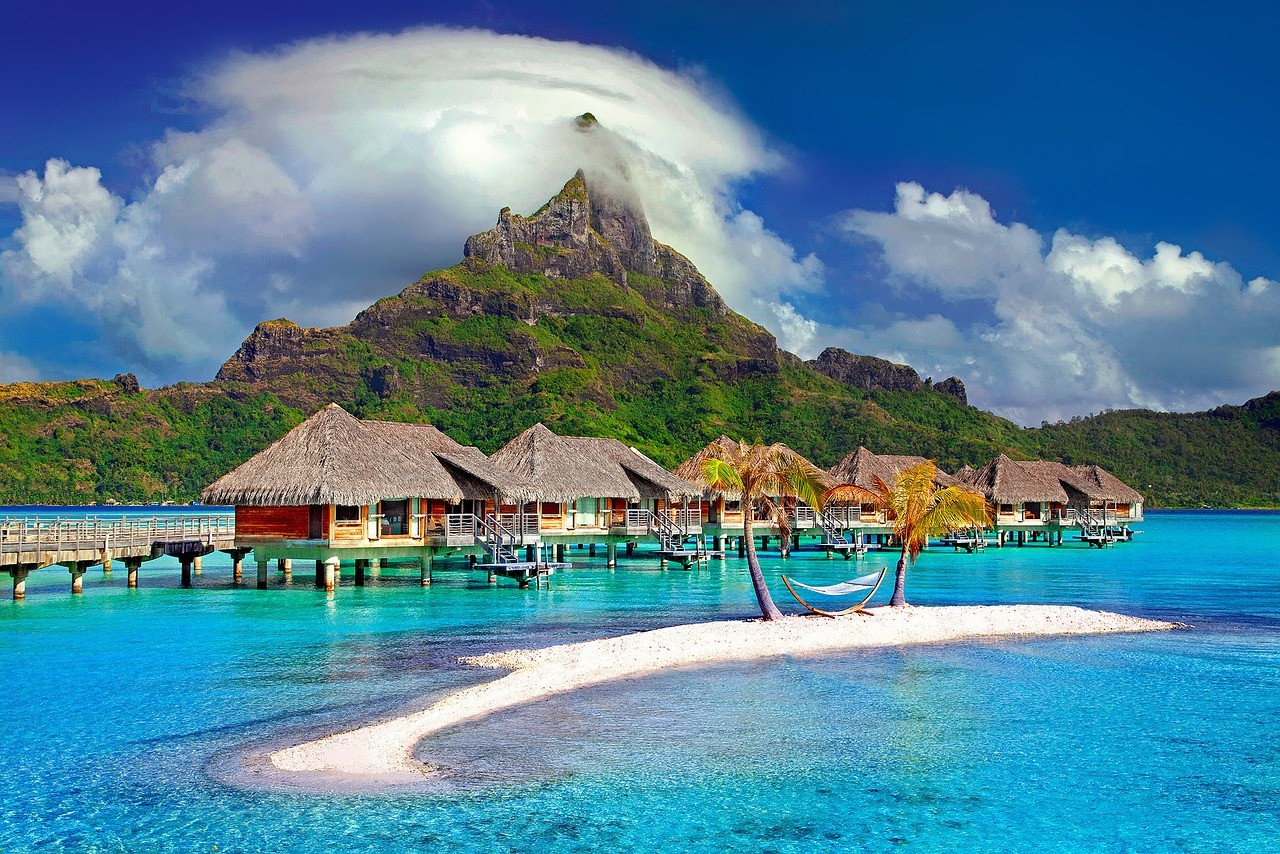 Image via Pixabay
Image via Pixabay
Located 277 kilometers and a 50-minute flight apart, Tahiti and Bora Bora are among the most beautiful – albeit expensive to visit – islands in the Pacific. In short, both islands are strong contenders for the literal definition of paradise.
Tahiti is the larger of the two islands, at 646 square kilometers, and boasts both white- and black-sand beaches, rich Polynesian culture and a myriad of watersport options. Surfing? Check. Scuba diving? Check. Fishing, snorkeling, kitesurfing and canoeing? Quadruple check. Recommended beaches include Plage de Toaroto (for snorkeling), Papanoo (for surfers) and the black-sand Venus Point (for everyone else).
At only 24 square kilometers, Bora Bora is considerably smaller than Tahiti. But don’t let size fool you: Bora Bora is a once-in-a-lifetime destination complete with a lush tropical landscape and pristine beaches. The accommodation of choice here: bungalows suspended over the clear, baby blue waters of the island’s lagoons.
For those looking to get off the beach and explore the interior of Bora Bora, the island is home to a number of WWII relics, including eight huge artillery cannons that were set up by US forces, who chose the island as their South Pacific supply base in the wake of the attack on Pearl Harbor.
2. The Maldives
 Image via Pixabay
Image via Pixabay
An independent nation composed of over 1,100 islands and sand banks, the Maldives is located off the southwestern coast of India. Famous for stunning beaches and crystal-clear water, the archipelago is a popular honeymoon destination for well-to-do couples, and there is no shortage of resorts that cater to this market. That being said, there is more to the Maldives than romance and matrimonial bliss on the beach: The island chain offers world-class diving, snorkeling, fishing and even some pretty decent surfing spots.
In fact, according to surfing news website SurferToday.com, despite being overlooked by many, the Maldives boasts some of the best waves in the world. The site goes on to dub the island chain as the perfect destination for intermediate and advanced surfers.
One thing worth noting: As a Muslim country, alcohol is not widely available outside of resorts or hotels, which means a fancy cocktail on the beach might not be an option unless you opt to spend the big bucks on swanky accommodation.
3. Manado and Bunaken Island, Indonesia
 Image via Wang Xuefeng
Image via Wang Xuefeng
When most people think of vacationing in Indonesia, they think of Bali, or possibly Lombok and the Gili Islands. One destination that we’ve discovered is not on most people’s radar, however, is the island of Sulawesi, and specifically the city of Manado on the island’s northern half.
While the city is home to unique cultural practices and great food, we’re going to focus squarely on the region’s marine resources, which were described to us by one Guangzhou-based travel industry insider as among “the best in the world.”
One of the most popular beaches in the vicinity of Manado city is Paal beach, although wise travelers will hop a boat to Bunaken National Marine Park and the five picturesque islands dotted within it. The marine reserve is famous for its stunning corals, vibrant fish species and sea turtles, and is popular for divers, snorkelers, beach bums and island hoppers.
Of note for divers: A 2012 survey of nine dive sites in the marine park found that six of the areas offered sightings of over 200 fish species in a single dive, while two sites yielded over 300 species. To put these numbers in perspective, counting over 200 species on any given dive indicates an area has ‘very high diversity.’
4. Sanya, China
 Image via Pixabay
Image via Pixabay
It doesn’t matter if you live in Hohhot or Shanghai, or if you’ve only been living in China for two weeks, the fact of the matter is that everyone here has heard about ‘China’s Hawaii’: Sanya.
Arguably the best place in China for a proper beach vacation, Sanya is the spot to go for those looking to score some much-needed R&R. The city, which is small by Chinese standards – sitting well below the 1 million resident threshold, is situated on the southernmost point of the island province of Hainan, and is known across the country as much for its tropical weather as it is for its signature chicken rice.
While the city itself is home to some spectacular beaches, we highly recommend making a day trip to the stunning, South Pacific-esque beaches of nearby Wuzhizhou Island.
For travelers not interested in going through the hassles of applying for a Chinese visa, Hainan allows visa-free entry up to 30 days for tourists from 59 countries (travelers must register with a Hainan-based travel agency).
Looking to visit China’s southern beauty? We’re currently offering a travel package to enjoy three days and two nights in a sea view room at The Westin Sanya Haitang Bay Resort for under RMB2,100. Click here or scan the QR code for more details.
For the Cultural Cosmonauts
1. Irkutsk and Lake Baikal, Russia
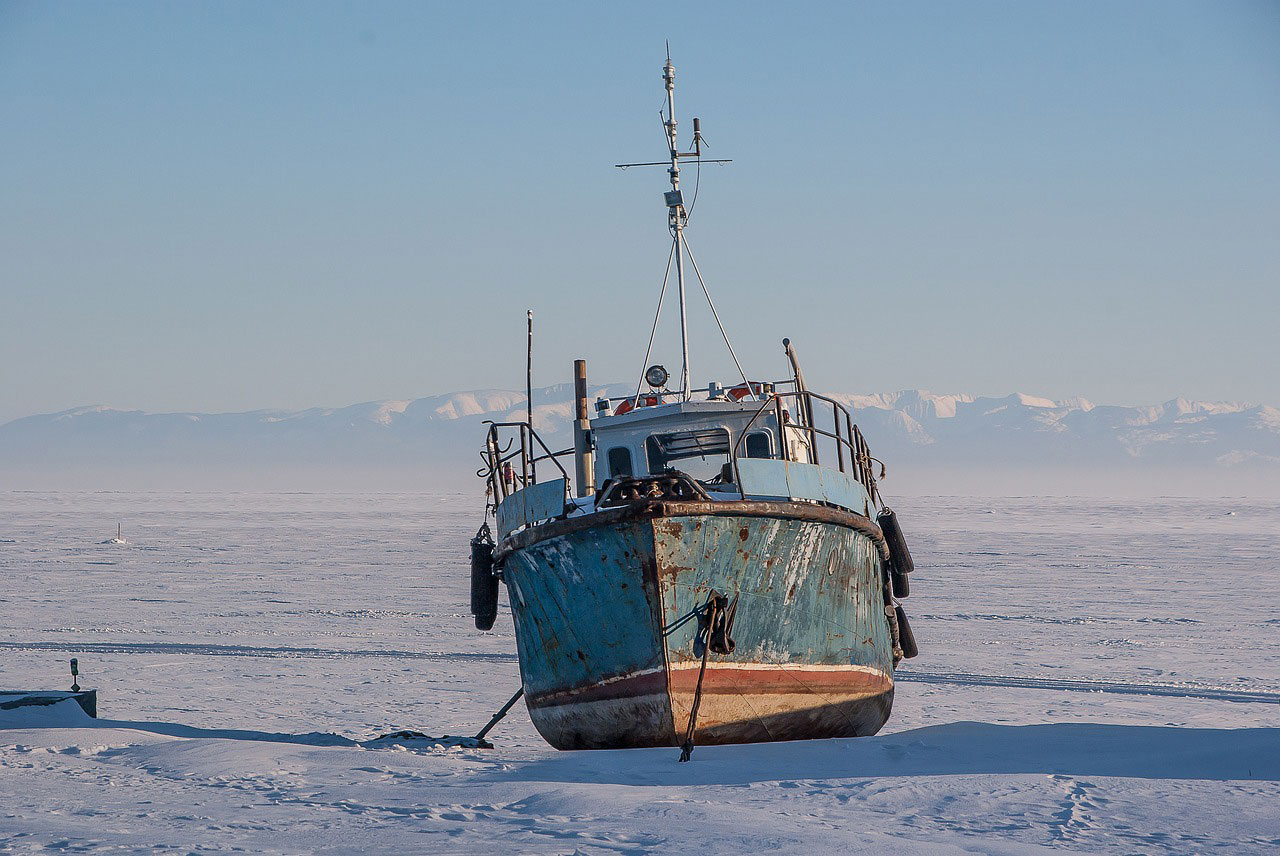 Image via Pixabay
Image via Pixabay
Located in the heart Eastern Siberia, the historic settlement of Irkutsk is, as the folks at Lonely Planet put it, “by far the most popular stop on the Trans-Siberian Railway.”
The city, which is located in Irkutsk Oblast, is a worthwhile destination for a number of reasons: 1) It’s a great place to scope out decaying Soviet architecture and weathered wooden structures used by notable Decembrist exiles; 2) It’s close proximity to the world’s largest freshwater lake by volume: Lake Baikal; 3) It offers travelers the chance to try both traditional Russian cuisine and local fish products, as well as food from the Buryat people (namely pozy: large meat-filled dumplings); and 4) There are ample churches, religious sites and museums to check out – for those looking for a little enlightenment.
Be sure to pay a visit to Irkutsk’s Prince Vladimir Monastery, which was built in 1888, and to check out local folk music and dance performances. Additionally, if you are visiting during the winter, don’t miss the city’s celebrated ice festival.
Adventurous travelers are encouraged to head to Lake Baikal for stunning scenery and the chance to learn more about the region’s Buryat heritage.
2. Dubai, United Arab Emirates
 Image via Pixabay
Image via Pixabay
Known globally for its Arabian, Emirati and Islamic cultural heritage – and for its culture of opulence and excess – Dubai is a fantastic introduction to the Arabian world. Home to Earth’s tallest building, the Burj Khalifa, the city is the capital of the Emirate of Dubai – one of the seven emirates that make up the United Arab Emirates.
An ideal jumping off point for further exploration of the Middle East – and Asia at large, Dubai offers a wide range of cultural activities and experiences, from lunch at a Bedouin camp in the desert and afternoon tea at an Arabian tea house in the city’s old town, to market, mosque and museum tours.
Wandering Dubai’s souks, or markets, is a popular way to spend a morning, and will give the intrepid traveler a window into the region’s handicraft and culinary culture. Souks in the city are specialized, focusing on products such as ornate gold jewelry, handicrafts, textiles and spices.
Interestingly, Dubai is one of the most multicultural spots in the Middle East and is home to large communities of Indians, Pakistanis and Bangladeshis, as well as smaller expatriate communities composed of Filipinos, Somalis and even Brits. According to an article published by Reuters, foreigners living in the city outnumbered local Emiratis by more than five to one back in 2013.
With Expo 2020 set to be held in the metropolis next year, there has never been a better time to hop a plane to the ‘City of Gold.’
3. Amritsar, India
 Image via Pixabay
Image via Pixabay
For a cultural adventure that knows few parallels, look no further than the city of Amritsar, located in India’s northern Punjab state. As the spiritual heart of the Sikh religion, the city offers rich cultural and historical experiences for intrepid travelers. Learn about the partition of India at the Partition Museum, visit the site of the 1919 Amritsar massacre, check out a bhangra (traditional Punjabi dance) performance, sample the region’s spectacular cuisine and, of course, spend an hour (or five) wandering the storied Harmandir Sahib, more commonly referred to as the Golden Temple.
Built way back in 1604 by the fifth Sikh Guru, Arjan, the Golden Temple is a major pilgrimage site for members of the Sikh faith and a glorious piece of architecture. A trip here is rewarding for a number of reasons: 1) You can learn about Sikhism and experience what was described to us by one visitor to the temple as “religious bliss”; 2) After dark, the site is lit up in grand fashion and must be seen in person to be fully appreciated; and 3) Visitors are able to enjoy a free vegetarian meal here, at what has been hailed as ‘the largest free kitchen in the world.’
According to a Munchies article from 2015, the temple’s kitchen – which is staffed by volunteers – serves 100,000 people on weekdays and as many as 150,000 people on holy days.
4. Huangshan, China
 Image via Pixabay
Image via Pixabay
Known in English as Yellow Mountain, Anhui province’s famed Huangshan Scenic Area is an esteemed member of the UNESCO World Heritage List and arguably one of China’s most popular tourist destinations. All this fanfare is for good reason, though, as the mountain offers visitors a stunning natural milieu and plenty of cultural activities to learn more about the area’s inhabitants.
When visiting the scenic area, we recommend staying in Chengkan Ancient Village, which is often touted as the best-preserved feng shui village in the South Yangtze region. This hidden gem is the oldest bagua (eight-sided) village in the vicinity of Huangshan, with a storied history dating back over 1,800 years, and has over 150 ancient homes designed in traditional Hui style, with 21 of those designated as major cultural relics to be protected as heritage architecture. It’s also less touristy than the nearby UNESCO ancient villages of Hongxun and Xidi, which makes for a more relaxing exploration experience.
Built around the Zhongchuan River, the village is surrounded by eight mountains and its labyrinth-like layout features 99 intricate roads and lanes. As local residents say, Chengkan Ancient Village is “the perfect place to get lost for a day.”
Discover the natural beauty of Yellow Mountain and Chengkan with this awesome travel deal: A two-night stay at the Shilili Fan Honeymoon Chengkan Yongxin Hostel, a boutique venue located near Huangshan, along with a set dinner for two, starting for just RMB1,399! To learn more, click here or scan the QR code.
For the Foodies
1. Kuala Lumpur, Malaysia
 Image via Unsplash
Image via Unsplash
Simply put: Malaysian food is spectacular, with bold and diverse flavors that demand equally as much recognition as the celebrated Thai cuisine. While regional specialties abound throughout the Southeast Asian nation, the nation’s capital of Kuala Lumpur, often referred to simply as KL, is the place to taste them all – and more. As a multicultural city, hungry travelers can dine on traditional Malay, Indian and Chinese cuisines all in the same day.
Craving roti canai (flat bread served with curry and dal)? You’ll find it in abundance in KL, and for less than RMB5 in many cases. The whole spectrum of Malay and Indonesian cuisine is on offer here, from nasi lemak (a fragrant rice dish) to seafood laksa (spicy noodle soup) to satay, and can be acquired either from brick-and-mortar restaurants or street stalls. (To be fair, there is debate about the origins of some of the aforementioned dishes, although we’ll be blunt: does it really matter?)
If Indian food is what you’re craving, we encourage you to saunter over to Brickfields, while those looking for award-winning dim sum are encouraged to hit up Din Tai Fung.
2. Hanoi, Vietnam
 Image via Pixabay
Image via Pixabay
The capital city of the Socialist Republic of Vietnam, Hanoi’s culinary experiences run the gamut, from fantastic street side pho, seafood spring rolls and cheese-stuffed baguettes, to more obscure offerings like dog meat, insects, cobra blood wine and boiled duck fetus eggs (famously known as balut in the Philippines).
While on our culinary escapades through Hanoi we’ve largely avoided the city’s more exotic – and dare we say, controversial – foodstuffs, there’s no denying that the noodle soup varieties offered in the North Vietnamese metropolis are among the best in the world.
The city’s Old Quarter is a good place to start for those looking for affordable local fare, including North Vietnam’s most famous dish: pho, noodles in a beef bone broth (occasionally the broth is made from other proteins).
Fans of the late gonzo chef Anthony Bourdain and/or former US President Barack Obama should be sure to check out Bun Cha Huong Lien, a restaurant where the duo enjoyed dinner together back in May 2016. The meeting was chronicled in an episode of CNN’s Parts Unknown, and the table that Bourdain and Obama dined at is now enshrined in glass.
3. Osaka, Japan
 Image via Pexels
Image via Pexels
No list of must-visit foodie destinations is complete without the island nation of Japan. Of the country’s numerous culinary hotspots, one really stands out: Osaka. As Japan’s third largest city you can find foodstuffs from across the country, as well as international eats.
Home to one of the nation’s largest fish markets, fresh, authentic sushi is readily available at a reasonable price. Ramen and Japanese curries are also easy to find and affordable, although we recommend dedicating at least a few of your Osaka meal times to three local street food specialties: kushikatsu (deep-fried skewered meat and vegetables), okonomiyaki (a savory pancake packed full of ingredients) and takoyaki (dough balls with octopus inside).
In addition to gorging and snacking until you literally drop, passionate foodies can also check out Momofuku Ando Instant Ramen Museum, a museum dedicated wholly to instant noodles and the founder of the Cup Noodle brand, Momofuku Ando.
4. Xiamen, China
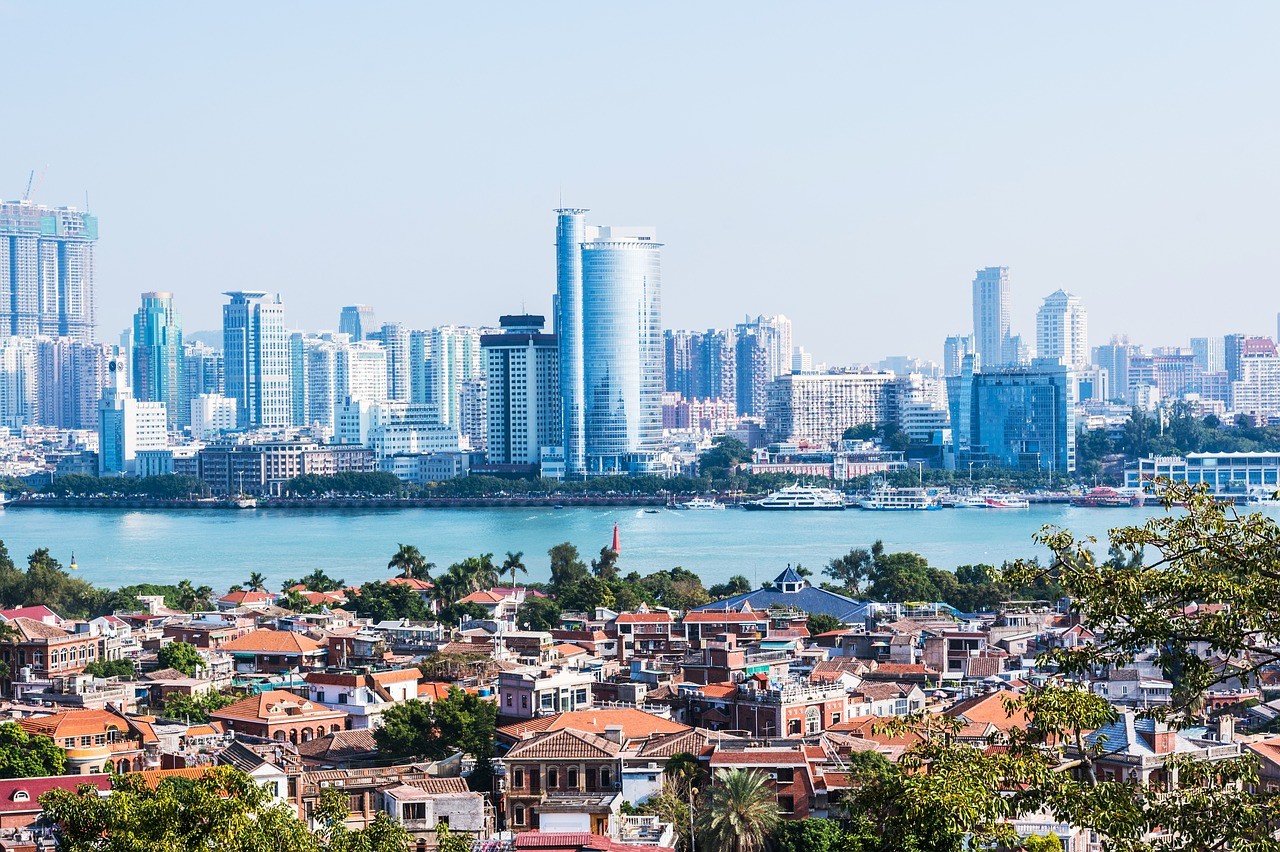 Image via Pixabay
Image via Pixabay
While perhaps not as famous for its cuisine as Guangzhou, Hong Kong and Chengdu, among others, Xiamen offers travelers passionate about edibles a vast tableau of culinary delicacies to sample and enjoy.
For an introduction to the seaside city’s cuisine, we recommend starting at Xiamen’s popular commercial street, Zhongshan Lu. While crammed so full of tourists on most days that you’ll likely feel like a canned sardine, the thoroughfare is a great spot to taste local delicacies, from Xiamen’s famous oyster omelet to seafood noodles.
Another popular foodie street is located a five-minute ferry ride from the city on Gulangyu Island – which, like several other spots on this list, has been honored by UNESCO. Meandering down pedestrian street Longtou Jie delivers countless opportunities to stuff your face and shop for souvenirs. The famous fish ball noodles here come highly recommended.
Foodies looking to visit Xiamen would be wise to check out this awesome hotel deal: Stay in a gorgeous resort with spectacular views of the city’s mountains, forests and bay scenery for only RMB1,688. This deal gets you a two-night stay in an executive room at the five-star Le Meridien Xiamen Hotel, as well as a buffet dinner for two. Yum! Click here or scan the QR code to learn more.
For the History Buffs
1. Bagan, Myanmar
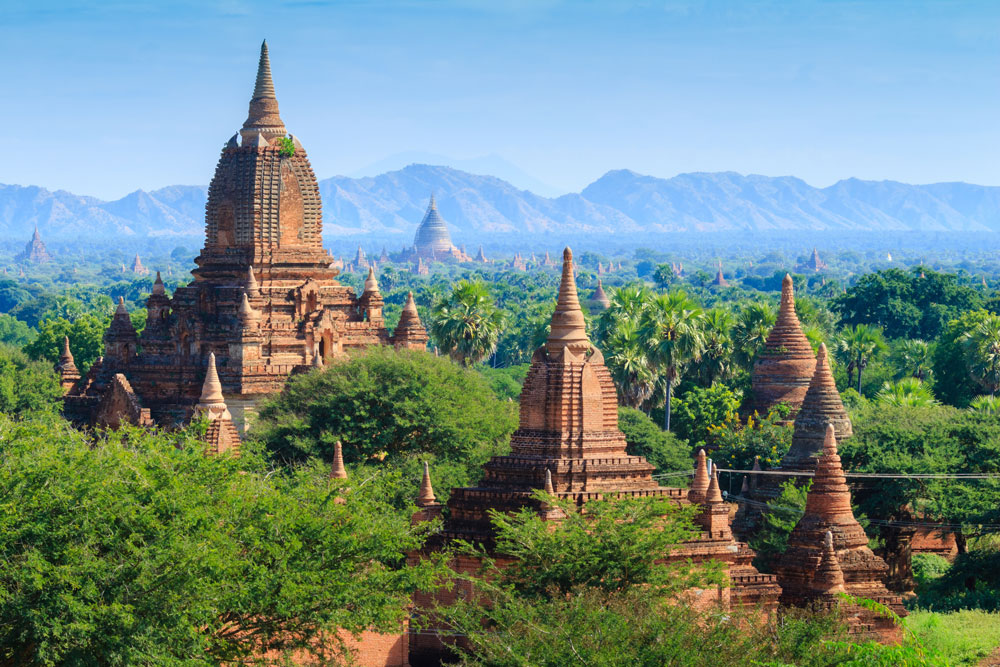 Image via Pixabay
Image via Pixabay
Hailed by more than a few folks (ourselves included) as Myanmar’s spectacular answer to Cambodia’s world-famous Angkor Wat, the ancient city of Bagan is a site composed of over 2,000 well-preserved temples and pagodas ranging from the 11th to 13th centuries. While unrest in the West of Myanmar has led some to shun the Southeast Asian country in recent years, Bagan remains a must-visit location for history buffs and those interested in the Buddhist faith.
Set roughly 145 kilometers south of Mandalay, along the banks of the Irrawaddy River, Bagan was once the vibrant heart of the Pagan Empire and a cosmopolitan center associated with religious, scientific and literary studies. The city eventually collapsed sometime in the 13th century due to repeated and sustained incursions by the Mongol Empire.
Like many of the destinations featured on this list, Bagan is under threat. According to UNESCO, the site lies in an active earthquake zone and suffered from more than 400 earthquakes between the turn of the 20th century and 1975. In July of 1975, a massive earthquake caused severe damage to more than half of the archeological and religious site’s important structures. According to the publication Irrawaddy, a 6.8 magnitude quake struck Bagan in August 2016 and damaged almost 400 pagodas.
2. The Plain of Jars, Laos
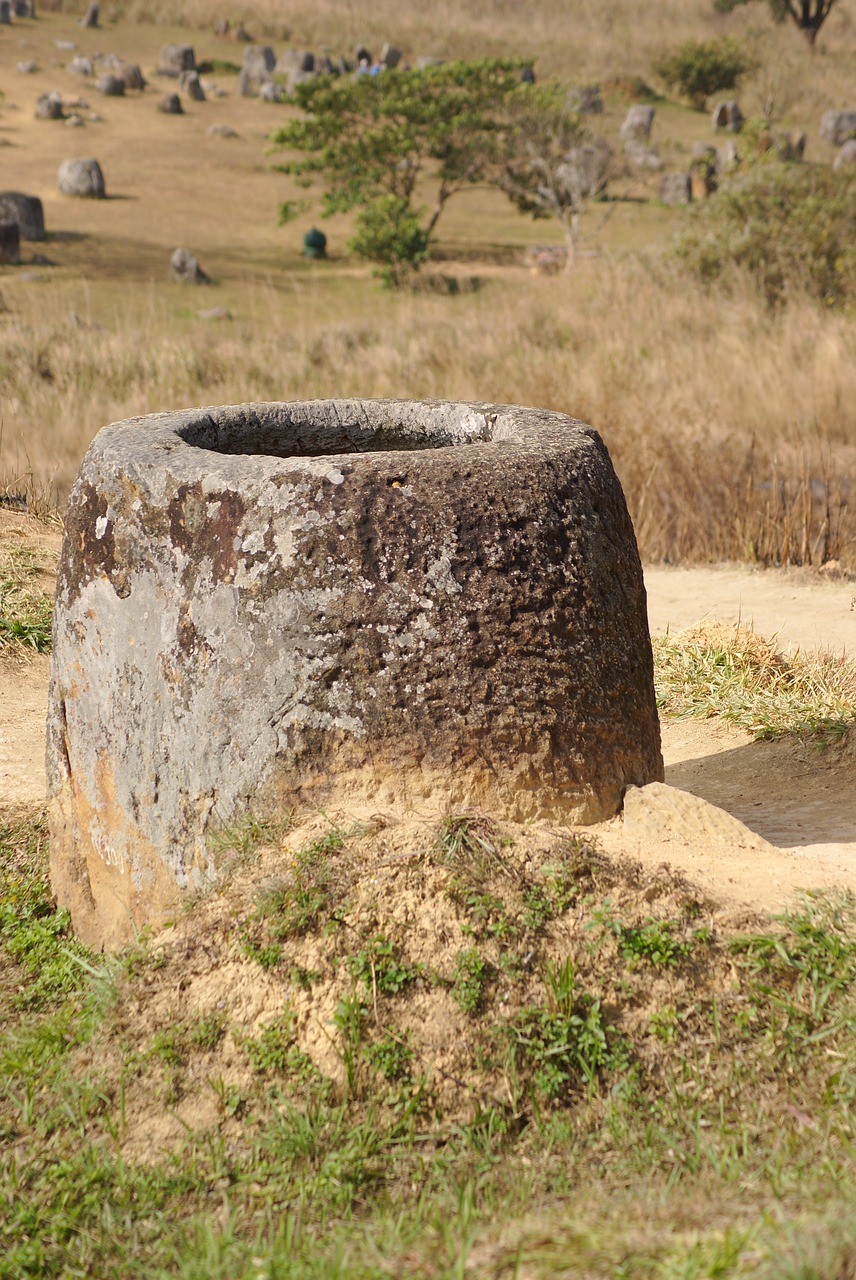
Image via Pixabay
Located off the beaten track in Central Laos, the Plain of Jars is fascinating for lovers of both contemporary and ancient history. While the famous stone jars that dot the site are indeed very, very old, this destination was also a flash point during the Vietnam War and saw heavy bombing by the US Air Force during the ‘Secret War.’ Signs of the conflict are still visible, and folks living near the archeological site have found creative ways to repurpose bombs and shell fragments in their homes.
But while the recent conflict history of the area is indeed interesting, the ancient, Iron Age megaliths that cover the plains landscape of the Xiangkhoang Plateau are the chief reason for a visit to the Plain of Jars.
Spread out over the rolling hills that surround the Xiangkhoang provincial capital of Phonsavan are 90 different sites altogether composed of roughly 2,500 large, stone urns. While some of these roughly 2,000-year-old jars are small enough that an adult can glance inside with ease, others are as tall as three meters, with a one-meter width.
Most tour groups to the Plain of Jars – which has been hailed by some as Southeast Asia’s answer to Stonehenge – visit Site 1, Site 2 and Site 3. While the trails at the main tourist areas of the three aforementioned jar sites are relatively safe, wandering off the path here is strong discouraged: The Plain of Jars was a US Air Force dumping ground for over 260 million cluster bombs – making it the world’s most bombed place – and unexplored ordinance is still a real problem in the area.
3. Gansu, China
 Image via Pixabay
Image via Pixabay
The rumored landing place of a lost Roman legion over 2,000 years ago (read more about this fascinating – albeit unlikely – story by clicking here), China’s Gansu province is home to a myriad of archeological sites from the days of the Old Silk Road. For one, the province plays host to the far western end of the Great Wall and the nearby ruins of Jiayuguan Pass, both of which are bucket list-worthy sites. Additionally, the Mogao Grottoes, also referred to as ‘Thousand Buddha Caves,’ are one of China’s most impressive Buddhist sites, home to an amazing collection of religious art (including both murals and statues) that was made over a period spanning roughly 1,000 years.
Located near the Mogao Grottoes, the Old Silk Road oasis city of Dunhuang is a certified history-buff hotspot. Checking out Crescent Lake and its surrounding dunes are a must, as is Yumen Pass and Yangguan Pass, both ancient fortifications.
Other worthwhile destinations include the vast reaches of the Gobi Desert, the Rainbow Mountains, Maijishan Grottoes, Matisi Temple, Labrang Monastery and even Lanzhou’s Gansu Provincial Museum, which contains a vast catalogue of artifacts from the region.
4. Nanjing, China
 Image via Unsplash
Image via Unsplash
For history lovers, Jiangsu province’s Nanjing is simply one of those places you just have to visit. The city, which was historically referred to as ‘Nanking,’ served as the capital for six dynasties and has been inhabited for at least 5,000 years.
Situated along the Yangtze River, several key historical attractions can be found throughout the city, including important sites and relics from the Ming Dynasty, as well as some of China’s most popular tourist spots.
With the Confucius Temple and other ancient buildings at the heart of the city, as well as the Ming City Wall and Qinhuai River nearby, Nanjing is truly a destination of cultural and historical significance.
We recommend planning to spend at least one day wandering around Purple Mountain, which is home to Ming Xiaoling Mausoleum, the Tomb of Sun Quan and the wildly popular Dr. Sun Yat-sen Mausoleum. Visitors are also encouraged to check out the Nanjing Massacre Memorial Hall, a sobering place that puts into perspective the horrors of war and the suffering the Chinese people endured at the hands of Imperial Japan.
Discover Nanjing’s history with an awesome travel package that is available for purchase right now! For just RMB849 per night, you’ll get to stay in one of four boutique hotels in the city, each themed according to a particular era in Nanjing’s history. To learn more, click here or scan the QR code.
 For More China Travel Guides...
For More China Travel Guides...
Already dreaming about your next vacation? Check out our informative online travel guides or purchase our definitive guide to China, the 2019 Explore China guide book, on thMart for the limited time presale price of just RMB129.
[Cover image via Pixabay]
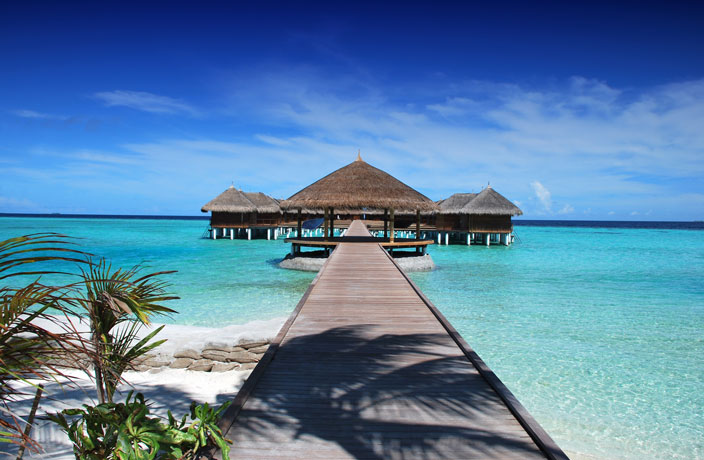























0 User Comments